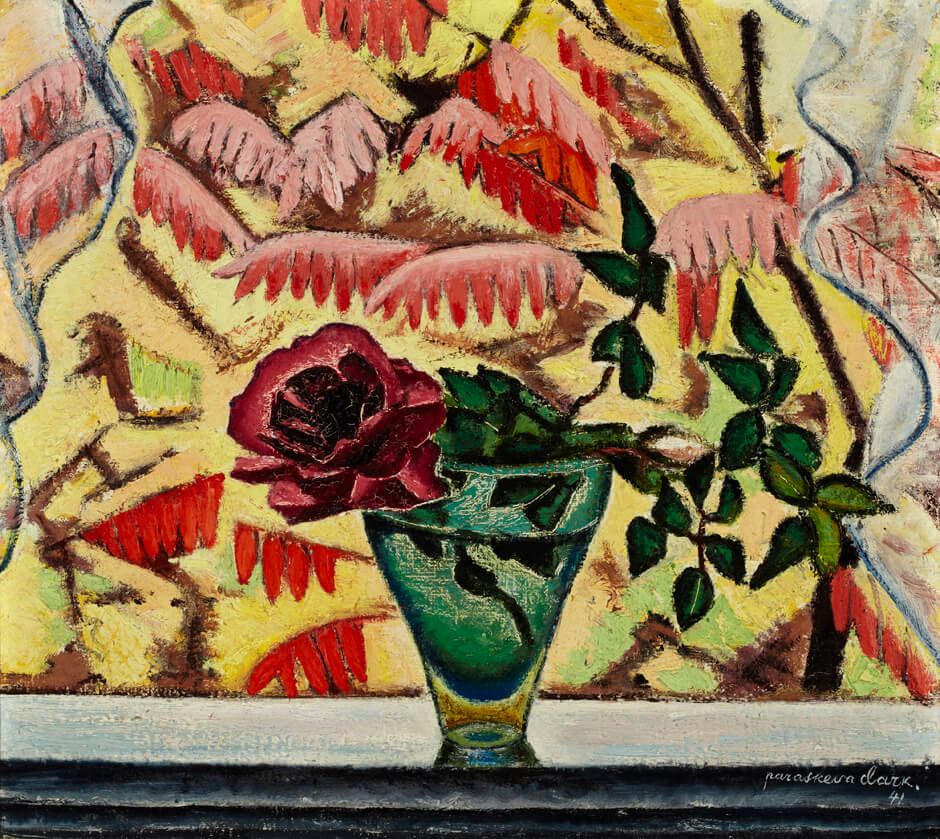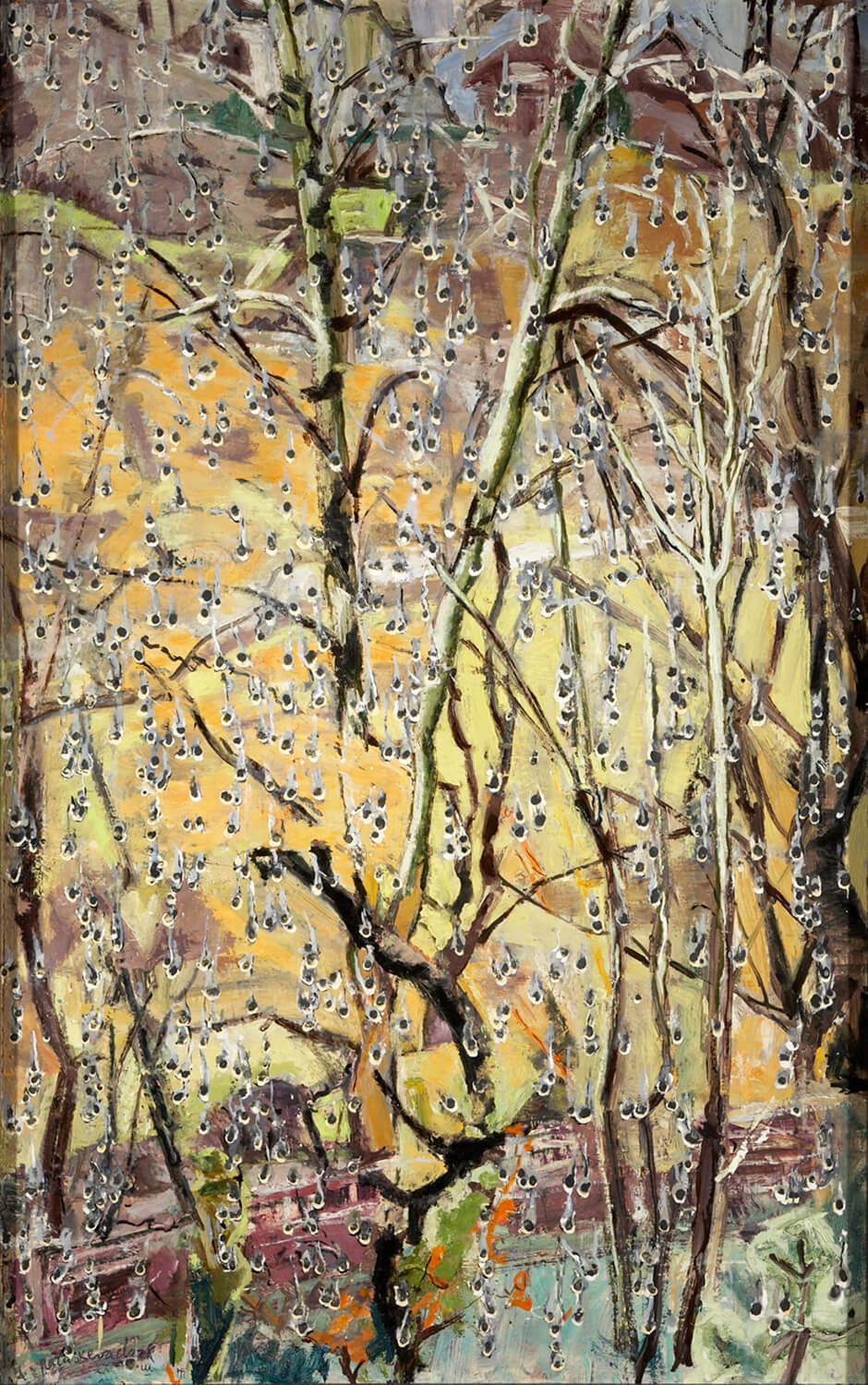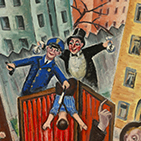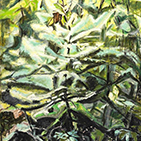October Rose 1941

Paraskeva Clark, October Rose, 1941
Oil on canvas, 41.2 x 46.4 cm
The Robert McLaughlin Gallery, Oshawa

October Rose is perhaps the earliest of Clark’s many paintings of flowers or plants set against a windowpane. Modest in size and subject matter, it is nonetheless bold in both colour and design, and a product of her Russian heritage and artistic roots in Post-Impressionism. It is this type of picture that earned her the description “naïve sophisticate.”
The painting depicts a single bloom with some leaves attached, placed in a cocktail glass on a windowsill. On the other side of the pane, providing a decorative backdrop, are the distinctive red leaves of a sumac tree in autumn, contrasting with the yellow of the surrounding trees. Clark has blurred the boundaries between inside and outside—only the sheer curtains and the windowsill and frame set them apart—as the rose and its foliage appear to be part of the semi-abstract patterning behind the glass. In some later examples on this theme, Clark used different visual clues (Rain on the Window, c. 1963, for example) or dispensed with them altogether, leaving viewers to make sense of the image themselves.
A new feature in Clark’s paintings from the autumn of 1941 into 1942 is her practice of drawing into the wet paint with a blunt instrument (usually the end of the brush handle), used here to give added definition to the flower petals and highlights to the glass and its contents. This development was undoubtedly the result of discussions on painting techniques she heard at the Conference of Canadian Artists in Kingston in June 1941. An interest in introducing texture to flat and uniform surfaces prevailed among many artists who came after the Group of Seven. The vivid palette and patterned surface of October Rose would have appealed to Isabel McLaughlin (1903–2002), a fellow member of the Canadian Group of Painters. She bought the canvas from Clark’s “In Aid of Russia” sale at the Picture Loan Society in December 1942.

 About the Author
About the Author
 More Online Art Books
More Online Art Books
 Acknowledgements
Acknowledgements